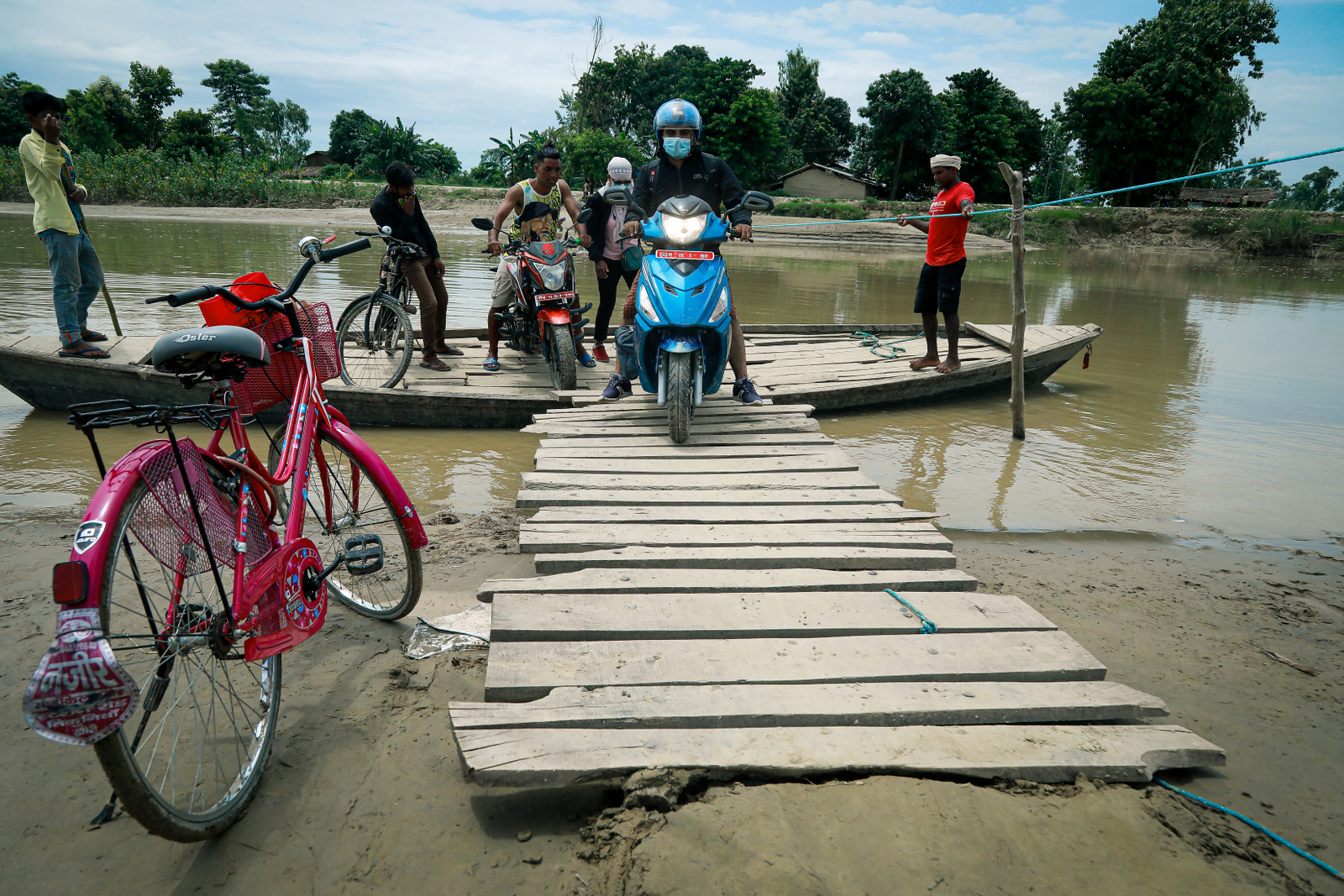Bridging the gap in Nepal

Every few minutes, traders with goods on motorcycles line up on one bank of Kendra River in Tikapur to cross over to the other side. There is a shed nearby made up of wood and a tarpaulin that shelters them as they wait to be ferried across.
There was a rickety bridge nearby, but it was washed away by the monsoon, and the government has not kept its promise of building a new one. So, locals depend on a ferry service between Lalbojhi and Bhajani municipalities in Kailali Province in the western Tarai.
Manish Chaudhary, 26, has been operating the ferry that bridges the two villages for the past three years from 6AM to 8PM every day.
On a normal day, Chaudhary gets at least 150 passengers a day and earns up to Rs2,000. It is Rs10 per ride for passengers on foot, Rs30 for bikes and cycles and Rs50 for four-wheelers. This small business in turn has to pay an annual fee of Rs150,000 to the municipality.
“I make a good earning here, when there is a lot of traffic, I even make up to Rs5,000 a day,” says Chaudhary. “This place is close to my house so during the monsoon I get to spend more time with my family as well as help them on the farm.”

But in a month, as the monsoon season tapers off, the river will soon shrink, and the water will be low enough to allow locals to ride or wade across. The ferry will then close till next year.
This is Chaudhary’s last year working as a human bridge, having decided that his four other business partners would rotate their turns operating the boat. So, his next turn will come after 12 years, when he will be 38 years old. Besides, by then the government may finally build the bridge, and there will be no need for the ferry.
Till then, Chaudhary says he will have to roam neighbouring districts in search of a job, or even go abroad, taking him away from his family.
Says Chaudhary, “I was in Dhangadi doing odd jobs before this, but the earning was minimal, it wasn’t enough to support my children and old parents, so I have to keep moving.”











Read Also: Kathmandu's 'flash floods' are 4 decades in the making, Tom Robertson




